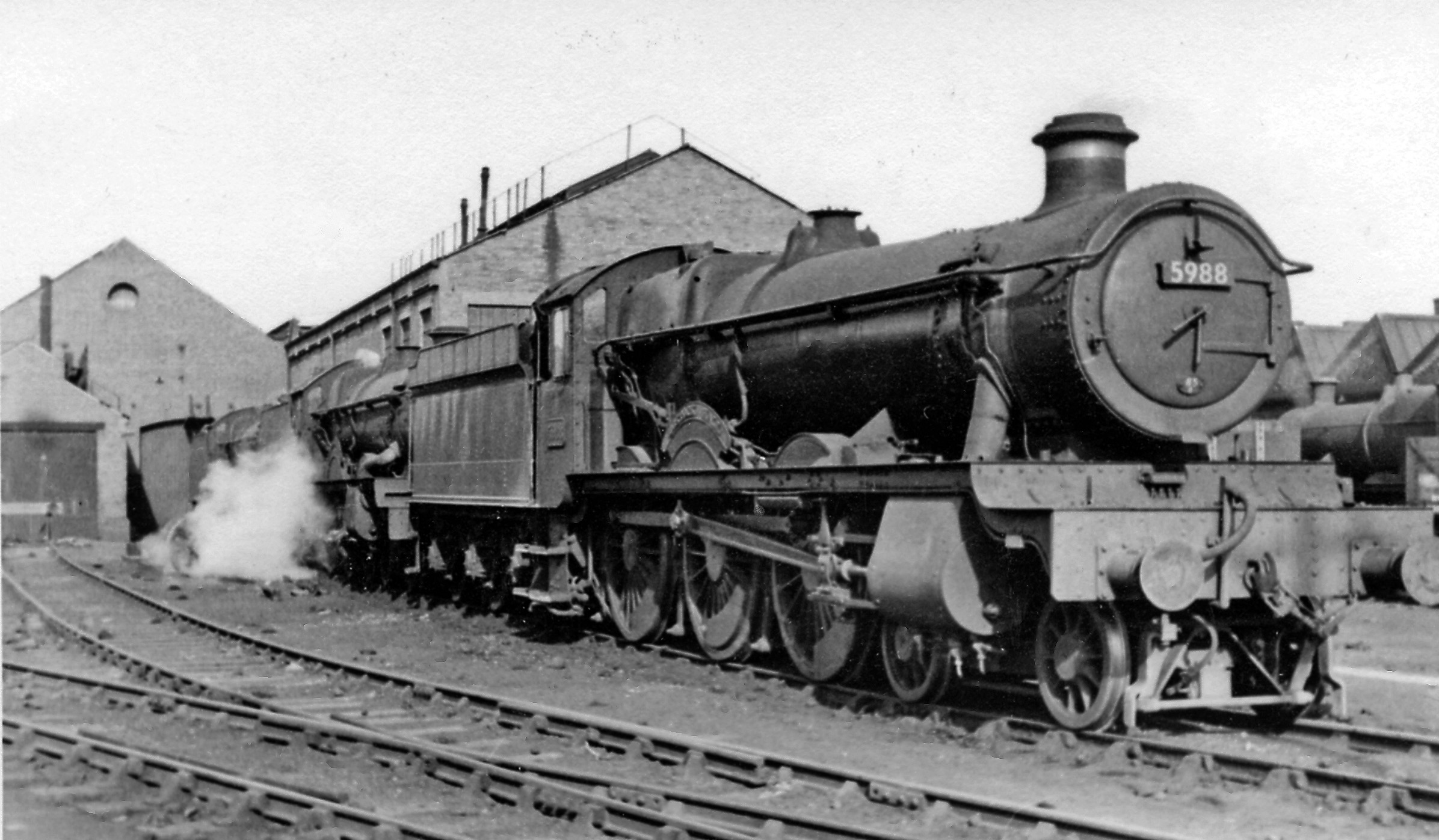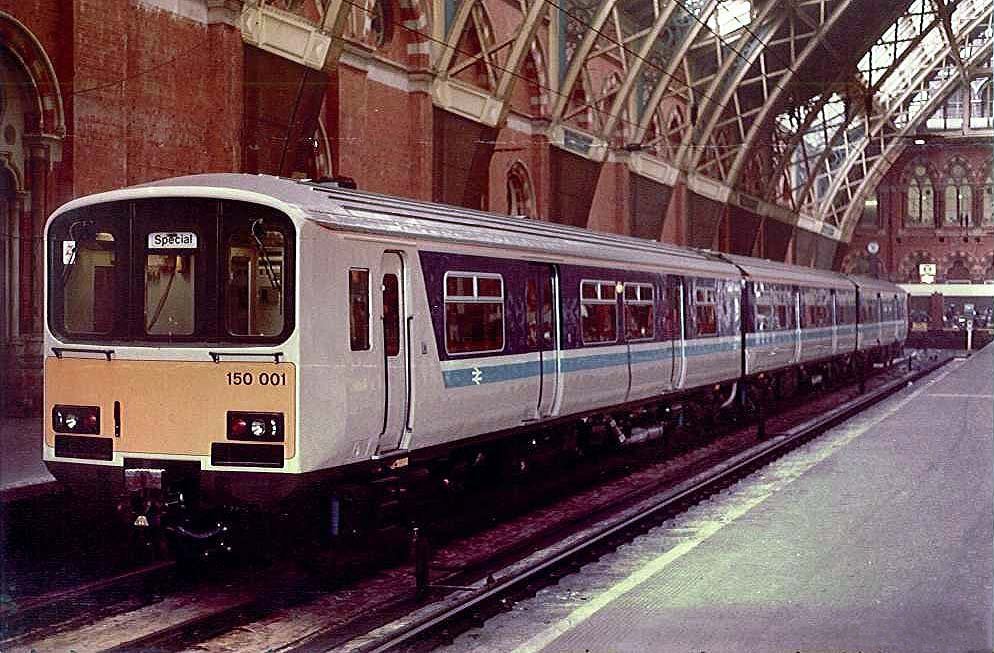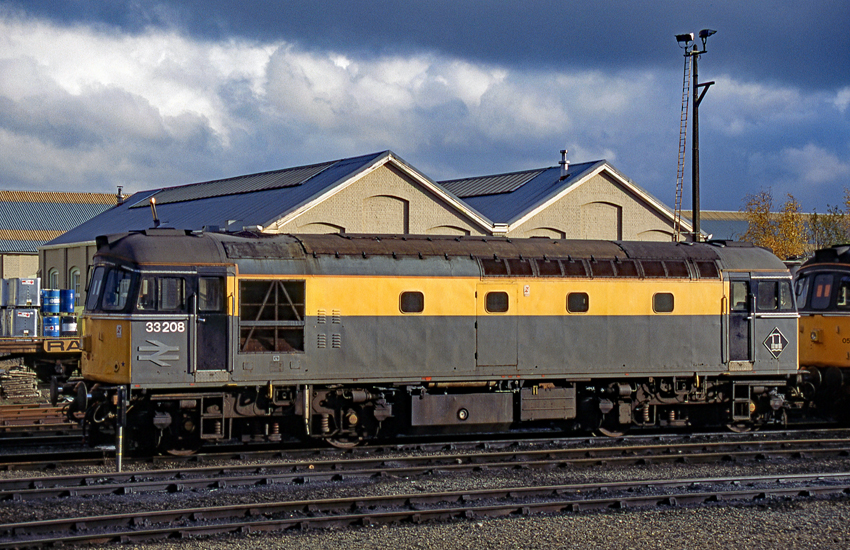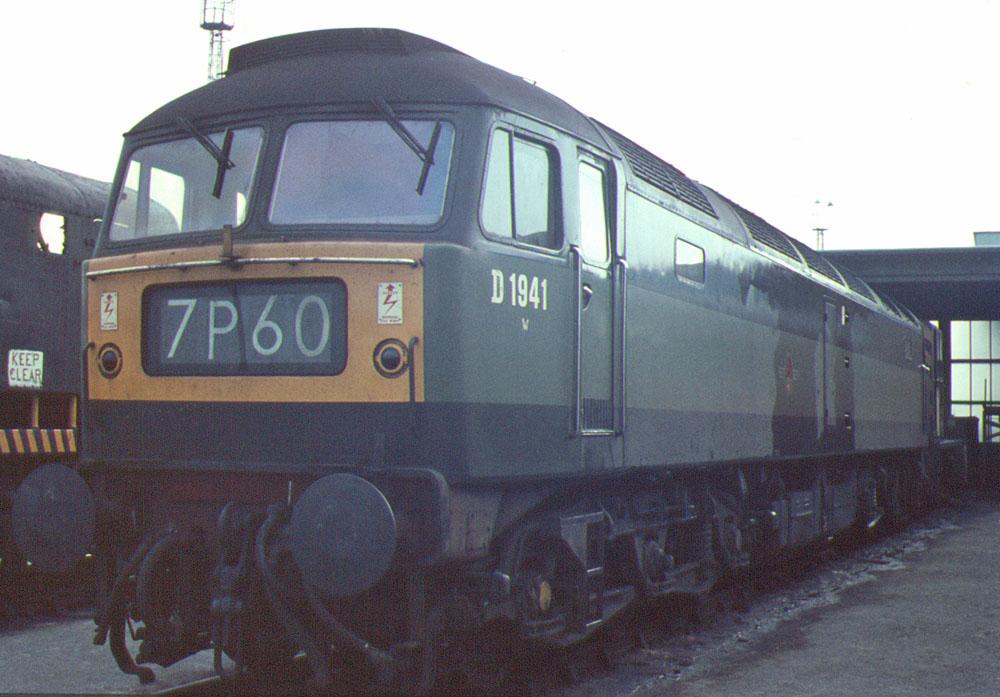|
Cardiff Canton TMD
Cardiff Canton TMD is a diesel locomotive traction maintenance depot in Cardiff, Wales. Its depot code is CF. It is operated by Transport for Wales. The depot is used by Transport for Wales fleet, GWR Class 158s and some Cross Country Class 170s. In steam days the depot was called Cardiff Canton and its shed code was 86C. It was built in 1882 as the main maintenance base for the South Wales Railway and the major Welsh engineering base for the Great Western Railway (GWR). After nationalisation in 1948 it was a heavy overhaul base for British Railways. After privatisation in the mid-1990s the depot became a joint Arriva Trains Wales and English Welsh & Scottish facility. The EWS depot closed as a maintenance centre from 10 December 2005, but EWS' successor DB Cargo UK still uses the depot for long-term storage and occasional stabling. History Steam Cardiff Canton was opened in June 1882 as a six road, -long shed, built to replace Long Dyke, east of Cardiff General station ... [...More Info...] [...Related Items...] OR: [Wikipedia] [Google] [Baidu] [Amazon] |
Cardiff
Cardiff (; ) is the capital city, capital and List of urban areas in the United Kingdom, largest city of Wales. Cardiff had a population of in and forms a Principal areas of Wales, principal area officially known as the City and County of Cardiff (). The city is the List of cities in the United Kingdom, eleventh largest in the United Kingdom. Located in the South East Wales, southeast of Wales and in the Cardiff Capital Region, Cardiff is the county town of the Historic counties of Wales, historic county of Glamorgan and in 1974–1996 of South Glamorgan. It belongs to the Eurocities network of the largest European cities. A small town until the early 19th century, its prominence as a port for coal when mining began in the region helped its expansion. In 1905, it was ranked as a city and in 1955 proclaimed capital of Wales. The Cardiff urban area covers a larger area outside the county boundary, including the towns of Dinas Powys and Penarth. Cardiff is the main commercial ce ... [...More Info...] [...Related Items...] OR: [Wikipedia] [Google] [Baidu] [Amazon] |
British Rail
British Railways (BR), which from 1965 traded as British Rail, was a state-owned company that operated most rail transport in Great Britain from 1948 to 1997. Originally a trading brand of the Railway Executive of the British Transport Commission, it became an independent statutory corporation in January 1963, when it was formally renamed the British Railways Board. British Railways was formed on 1 January 1948 as a result of the Transport Act 1947, which nationalised the Big Four British railway companies along with some other (but not all) smaller railways. Profitability of the railways became a pressing concern during the 1950s, leading to multiple efforts to bolster performance, including some line closures. The 1955 Modernisation Plan formally directed a process of dieselisation and electrification to take place; accordingly, steam locomotives had been entirely replaced by diesel and electric traction (except for the narrow-gauge Vale of Rheidol Railway tourist lin ... [...More Info...] [...Related Items...] OR: [Wikipedia] [Google] [Baidu] [Amazon] |
British Rail Class 158
The British Rail Class 158 ''Sprinter (British Rail), Express Sprinter'' is a diesel multiple unit (DMU) passenger train. It is a member of the Sprinter (British Rail), Sprinter series of regional trains, produced as a replacement for British Rail's List of British Rail diesel multiple unit classes#First generation, first generation of DMUs; of the other members, the British Rail Class 159, Class 159 is almost identical to the Class 158, having been converted from Class 158 to Class 159 in two batches to operate express services from West of England Main Line, London Waterloo to the West of England. The Class 158 was constructed between 1989 and 1992 by British Rail Engineering Limited (BREL) at its Derby Litchurch Lane Works. The majority were built as two-car sets; some three-car sets were also produced. During September 1990, the first Express Sprinters were operated by ScotRail (British Rail), ScotRail; the type was promptly introduced to secondary routes across the Midland ... [...More Info...] [...Related Items...] OR: [Wikipedia] [Google] [Baidu] [Amazon] |
British Rail Class 153
The British Rail Class 153 ''Sprinter (British Rail), Super Sprinter'' are single-coach Diesel multiple unit#diesel–hydraulic, diesel-hydraulic railcars which were converted from two-coach diesel multiple units in the early 1990s. The class was intended for service on rural branch lines, either where passenger numbers do not justify longer trains or to boost the capacity on services with high passenger volume. Description In 1987 and 1988, Regional Railways took delivery of 35 two-coach Class 155 units, built by Leyland Bus at its Workington factory, to replace older DMUs. After the Class 155s entered service, a further requirement emerged for the replacement of ageing railcars on rural lines, mostly of and . British Rail decided to meet this need by dividing each unit in the Regional Railways Class 155 fleet into two separate railcars that could then be converted for use independently, which would create a fleet of 70 vehicles. The seven further Class 155 units that had bee ... [...More Info...] [...Related Items...] OR: [Wikipedia] [Google] [Baidu] [Amazon] |
British Rail Class 150
The British Rail Class 150 '' Sprinter'' is a class of diesel-hydraulic multiple unit passenger trains, developed and built by British Rail Engineering Limited at York Carriage Works between 1984 and 1987 for use on regional services across Great Britain. The type is a second-generation design, built to more modern standards and based on BR's Mark 3 body design for longer-distance services. It was developed alongside the lower-cost Pacers, which were built using bus parts, for use on short-distance services. Two prototype units were built, followed by 135 production units in two batches. Subsequently, further members of the Sprinter family were developed and introduced to service, including the Class 155, Class 156, Class 158 and Class 159. Background By the beginning of the 1980s, British Rail (BR) was operating a large fleet of first-generation DMUs of various designs. While formulating its long-term strategy for this sector of its operations, BR planners recognised ... [...More Info...] [...Related Items...] OR: [Wikipedia] [Google] [Baidu] [Amazon] |
British Rail Mark 4
The British Rail Mark 4 is a class of Passenger car (rail), passenger carriages built for use in InterCity 225 sets on the East Coast Main Line between London King's Cross railway station, King's Cross, Leeds railway station, Leeds and Edinburgh Waverley railway station, Edinburgh. Withdrawals began in 2019, with some being sold for further use with Transport for Wales Rail, Transport for Wales between Cardiff Central railway station, Cardiff and Holyhead railway station, Holyhead. History and construction A small build compared with the British Railways Mark 2, Mark 2 and British Rail Mark 3, Mark 3 designs, 314 Mark 4 coaches were built between 1989 and 1992 by Metro-Cammell's Washwood Heath factory to operate services on the newly electrified East Coast Main Line. They were operated by London North Eastern Railway and its predecessors in 30 fixed formations of nine carriages, with a British Rail Class 91, Class 91 locomotive and Driving Van Trailer. The Mark 4 is an all-ste ... [...More Info...] [...Related Items...] OR: [Wikipedia] [Google] [Baidu] [Amazon] |
British Rail Class 67
The Class 67 locomotives are a class of Bo-Bo diesel-electric locomotives that were built for the DB Cargo UK, English Welsh & Scottish Railway (EWS) between 1999 and 2000 by Alstom at Meinfesa in Valencia, Spain with drive components (engine, generator and traction motors) from General Motors' Electro-Motive Diesel, Electro-Motive Division. 67003 was the first of the class to be scrapped at Kingsbury on May 27th 2025. EMD's designation for this locomotive type is JT42HW-HS. History Design, testing and introduction DB Cargo UK, EWS ordered thirty locomotives via leasing company Angel Trains in a £45 million contract split between Alstom and Electro Motive Diesel, for use as British Rail Class 47, Class 47 replacements for hauling high-speed Royal Mail trains and passenger trains. The locomotives were obtained on a 15-year lease from Angel Trains. At the end of the fifteen-year contract, ownership of the locomotives was transferred to DB Cargo UK. The bodyshell is a monoc ... [...More Info...] [...Related Items...] OR: [Wikipedia] [Google] [Baidu] [Amazon] |
British Rail Class 50
The British Rail Class 50 is a class of diesel locomotives designed to haul express passenger trains at . Built by English Electric at the Vulcan Foundry in Newton-le-Willows between 1967 and 1968, the Class 50s were initially on a 10-year lease from English Electric Leasing, and were employed hauling express passenger trains on the then non-electrified section of the West Coast Main Line between Crewe railway station, Crewe and Scotland. Initially numbered D400–D449 and known as English Electric Type 4s, the locomotives were purchased outright by British Rail (BR) at the end of the lease and became Class 50 in the TOPS renumbering of 1973. The class gained the nickname "Hoovers" because of the noise made by the clean air plant at the No. 2 end, prior to refurbishment, which was likened to that of a vacuum cleaner, a name believed given to them by the staff at Paddington Station. Once the electrification from Crewe to Glasgow was completed the locomotives were moved to the Grea ... [...More Info...] [...Related Items...] OR: [Wikipedia] [Google] [Baidu] [Amazon] |
British Rail Class 33
The British Rail Class 33, also known as the BRCW Type 3 or Crompton, is a class of Bo-Bo diesel-electric locomotives, ordered in 1957 and built for the Southern Region of British Railways between 1960 and 1962. They were produced as a more powerful Type 3 (1,550 bhp) development of the 1,160 bhp Type 2 Class 26. This was achieved, quite simply, by removing the steam heating boiler and fitting a larger 8 cylinder version of the previous 6 cylinder engine. This was possible because of the traffic requirements of the Southern Region: locomotive-hauled passenger traffic depended on seasonal tourist traffic and was heavier in the summer, when carriage heating was not needed. In the winter, their expected use was to be for freight. Thus, they became the most powerful BR Bo-Bo diesel locomotive. The perennially unreliable steam heating boiler could also be avoided. A total of 98 were built by the Birmingham Railway Carriage and Wagon Company (BRCW) and they were known a ... [...More Info...] [...Related Items...] OR: [Wikipedia] [Google] [Baidu] [Amazon] |
British Rail Class 56
The British Rail Class 56 is a type of diesel locomotive designed for heavy freight work. It is a List of British Rail power classifications, Type 5 locomotive, with a Paxman (engines), Ruston-Paxman power unit developing 3,250 Horsepower, bhp (2,423 Watt, kW), and has a Co-Co locomotives, Co-Co wheel arrangement. Enthusiasts nicknamed them "Gridirons" (or "Grids" for short), due to the grid-like Train horns, horn cover on the locomotive's cab ends fitted to nos. 56056 onwards. Under its Romanian railway factory nomenclature, the locomotive was named Electroputere LDE 3500, with LDE coming from ''Locomotivă Diesel-Electrică'' (Diesel-Electric Locomotive) and the 3500 being the planned horsepower output. The Class 56 fleet was introduced between 1976 and 1984, a total of 135 examples were manufactured. The first 30 locomotives (56001 - 56030, factory classification LDE3500) were built by Electroputere in Romania, but these typically suffered from poor construction standards an ... [...More Info...] [...Related Items...] OR: [Wikipedia] [Google] [Baidu] [Amazon] |
British Rail Class 47
The British Rail Class 47 or Brush Type 4 is a class of diesel-electric locomotive that was developed in the 1960s by Brush Traction. A total of 512 Class 47s were built at Brush's Falcon Works in Loughborough and at British Railways' Crewe Works between 1962 and 1968, which made them the most numerous class of British mainline diesel locomotive. They were fitted with the Sulzer (manufacturer), Sulzer 12LDA28C U engine, twin-bank twelve-cylinder unit producing though this was later derated to to improve reliabilityand have been used on both passenger and freight trains on Britain's railways for over 55 years. Despite the introduction of more modern types of traction, a significant number are still in use, both on the mainline and on heritage railways. , 76 locomotives still exist as Class 47s, including 32 which have been preserved. 31 locomotives, including six which are preserved, retain mainline running certificates. A further 33 locomotives were converted to British Rail ... [...More Info...] [...Related Items...] OR: [Wikipedia] [Google] [Baidu] [Amazon] |
British Rail Class 37
The British Rail Class 37 is a Diesel locomotive, diesel–electric locomotive. Also known as the English Electric Type 3, the class was ordered as part of the British Rail Modernisation Plan, British Rail modernisation plan. They were numbered in two series, D6600–D6608 and D6700–D6999. The Class 37 became a familiar sight on many parts of the British Rail network, in particular forming the main motive power for InterCity (British Rail), InterCity services in East Anglia and within Scotland. They also performed well on secondary and inter-regional services for many years. Many are still in use today on freight, maintenance, and empty stock movement duties. The Class 37s are known to some railway enthusiasts as "tractors", a nickname given due to the similarities between the sound of the Class 37's engine and that of a tractor. Description Background As part of the large scale dieselisation brought about by the History of rail transport in Great Britain 1948 - 1994#T ... [...More Info...] [...Related Items...] OR: [Wikipedia] [Google] [Baidu] [Amazon] |












